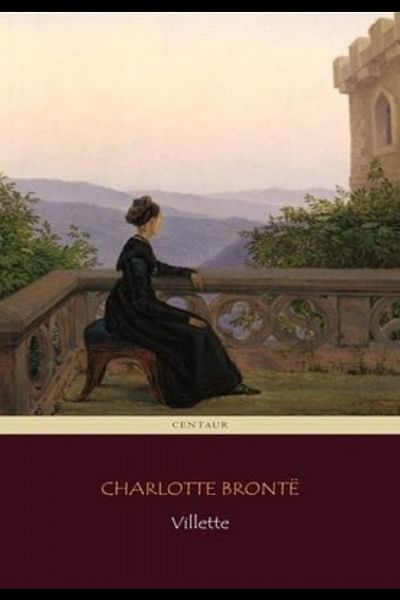Charlotte Brontë’s Villette: Food for Thought

Charlotte Brontë's Jane Eyre is widely read as a classic feminist novel. Published in 1953, Villette, however, still resides in a shadowy region. Most readers of English novels would raise their eyebrows and then would exclaim, "Ah, that one!" And yet, in a number of ways Villette is a reminiscent of Brontë's other novel, Jane Eyre. The protagonists of both novels are lonely and poor young women venturing out in the world on their own. Both of them face adverse situations, fall in love, and suffer. Both prosper later in their lives. For many readers, the similarities end here, and for most, Lucy Snowe, the protagonist of Villette might appear antithetical to the eponymous heroine of Jane Eyre. For me, they appear as the two faces of the same coin. Whereas Jane Eyre is the romantic, turbulent expression of a deeply felt love, Villette is the realistic version of the same story lacking the presence of Edward Rochester, the Byronic hero that came to frequent many works of the regency romance in later times.
In many ways again, Lucy is like Jane, having lost her home and family at an early age and is forced to take up the job of companionship to an elderly lady. Later on, she travels to Villette, a fictional French-speaking city to teach at a boarding school run by Mme. Beck. Here, she meets M. Paul Emanuel, a relative of Mme. Beck, who is a teacher at the academy and eventually the two fall in love. But Lucy is Protestant while the other is Catholic and there are hindrances in their union. M Paul has to go away to West Indies, but before leaving, he declares his feelings for Lucy and helps her setting up her own boarding school, which she develops further.
The biggest problem that one faces while reading Villette stems from the reticence of its central figure. Much like Jane, Lucy is intelligent and observant. But very unlike Jane, she is quiet, reserved and patient. She hardly shares her thoughts and feelings with those around her. Moreover, she also keeps her readers at bay from reading her innermost thoughts. At best, she hints at certain occurrences, and surprises by her nonchalant revelations. Lucy might appear cold and indifferent because of her reticence, but she is also capable of being passionate, and forming sincere attachment. Her contentment in her service for Miss Marchmont reveals that she was truly able to connect with the semi-invalid elderly lady. For her god mother Mrs. Bretton and her son Graham, too, she feels deeply. When she gains consciousness in the presence of the former, the familiar furniture from the oblivious past make her yearn for a lost, but happy time. She even rushes to the window to see if she was back in that old house in the St. Anne's Street. (190)
How else is Villette a realistic version of Jane Eyre? Jane Eyre is the romantic tale of an eighteen years old young woman who finds her "master" in the Byronic Rochester. There are problems, but eventually they overcome the obstacles and live happily ever after. But the very fact that Lucy has to bury her first love and accept the truth about Dr. John that he would never fall for a poor girl of little physical beauty marks her story as realistic and plausible. Dr. John, or Graham Bretton is a kind and good person, but lacks depth in character. In a real world, there is only M. Paul, who is difficult to be understood even by the keenly observant Lucy Snowe. Even though he is revealed to be noble in a strange fashion, he lacks the charisma and strength of Rochester.
I also could not help feeling that whereas none of the male characters have even the capacity to understand Lucy fully, the women around her are more appreciative of her. Her relationships with Miss Marchmont and Mrs. Bretton highlight the importance of the absentee mother in Lucy's life. Here once again one can detect a parallel connection to Jane Eyre. From this perspective, even the intrusive Madame Beck has an important role to play. Then just as Jane played the mother's role in little Adela's life, Lucy comes to play a similar role in the lives of both thoughtless and flirtatious Ginevra, and her ladylike and thoughtful cousin Paulina.
That Villette is a realistic realization of the other novel is also given out in its title. Unlike Jane Eyre, the focus of the title is not on the heroine, but on the setting. Though it is her story, in her pragmatic and cautious way Lucy Snowe manages to influence beyond her story by claiming that she is not significant enough to have her name on the title page. She seems to want to include the stories of all those having impact on her life. However, the fact that she is able to do so much shows her to be very important indeed.
Charlotte Brontë's treatment of the supernatural has always seemed fascinating to me. Unlike her sister Emily, she always looks for an explanation for the eerie, bizarre elements she uses in her novels. But whereas the demonic laughter of Thornfield can be credibly traced back to the mad woman in the attic, the mysterious nun in Villette transforming into M le Comte de Hamal is a disappointment. At the same time, it is probably the author's way of grappling with the reality where there is no way of becoming an heiress. At best, one can get a hundred pounds from a charitable benefactress, or through someone's guilty conscience.
In my years of reading literature, I have come to this understanding: "Truth might very well be sordid. But we make it beautiful/ meaningful through our interpretations. Hence life is about interpretations, as is literature." When I was younger, I loved Jane, her bold proclamations about love and life. A part of me will always admire her, but I have also learnt to appreciate Lucy and I feel that Charlotte Brontë in all probability, put more of herself in Lucy than she did with Jane.
Sohana Manzoor is Associate Professor, Department of English and Humanities at ULAB. She is also the Literary Editor of The Daily Star.

 For all latest news, follow The Daily Star's Google News channel.
For all latest news, follow The Daily Star's Google News channel. 



Comments